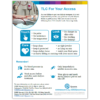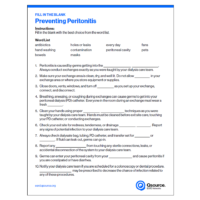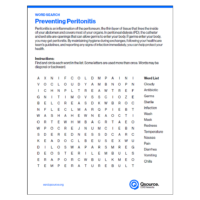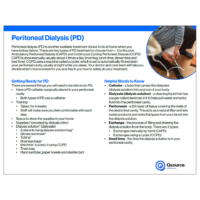
Dialysis Access
The Centers for Medicare and Medicaid continues to focus on long-term catheter rates and solutions for mitigation of the use of central venous catheters in patients who have the option for a more optimal access, such as Arteriovenous Fistula, Arteriovenous Graft, or Peritoneal Dialysis Catheter. This page is dedicated to helping dialysis providers work toward the CMS goal of decreasing long-term catheters by placing and maintaining vascular access in those patients who have selected hemodialysis as their choice of modality. Vascular Access Management is quite complicated and includes many layers of targeted intervention to make improvements. You will find resources on this page to assist clinics in management of vascular access and to help patients choose and maintain the best access for each individual circumstance.
Tools and Resources
Preventing Infections
Put together the Pieces to Prevent Infections in Dialysis Patients: This staff resource will help staff members take steps to help prevent infections in dialysis patients by following good infection control practices.
Infection Control Pledges: Both the staff and patient Infection Control Pledges help to educate and let staff and patients take control of doing their part in infection management.
Helpful Websites and Other Resources
Check Your Patient’s Catheter
It only takes a minute to check your patient’s catheter before you connect. This staff resource is for staff to utilize to make sure they are properly assessing the patients access before each treatment. By checking the patient’s catheter prior to connection, you could prevent any adverse occurrences such as infections. Please use the link to access the printable catheter staff instructions.
Patient Catheter Check Guide
Teaching your patients to check their catheter could help prevent any adverse occurrences such as infections. Educate your patients so that they are familiar with any changes to their catheter or catheter site. Please use the link to access the printable Complete Patient Catheter Check Guide.
Peritoneal Dialysis and Peritonitis
One of the most common problems with peritoneal dialysis (PD) is the risk of peritonitis. This is when your peritoneum, that natural lining in the stomach, gets infected. This might happen if germs get into the belly through the patients PD catheter. There are steps you can teach your patients to reduce the risk of your patients getting an infection. Visit the Dialysis Patient Citizens Center for more information on how to stay healthy on peritoneal dialysis.
Preventing Peritonitis
Dialysis patients have a greater chance of getting an infection. Peritoneal dialysis (PD) uses a catheter to remove waste products from the blood. The catheter is placed in the lining of the belly, called the peritoneum. If harmful germs, like bacteria or fungi, get on the catheter, you may get peritonitis. Teaching your patients early prevention against peritonitis is key to decrease the their risk for contracting an infection.

 Download:
Download:  Download:
Download:  Download:
Download:  Download:
Download:  Download:
Download:  Download:
Download:  Download:
Download:  Download:
Download:  Download:
Download:  Download:
Download:  Download:
Download:  Download:
Download:  Download:
Download:  Download:
Download:  Download:
Download: